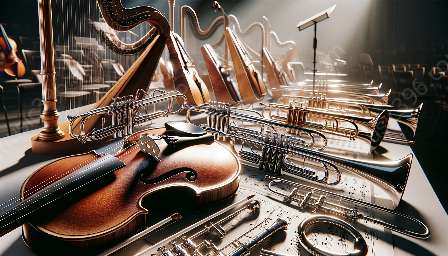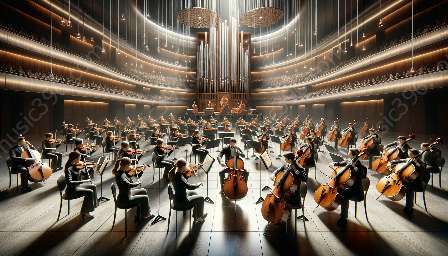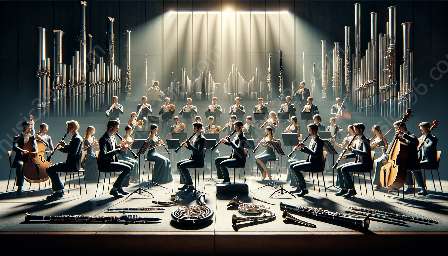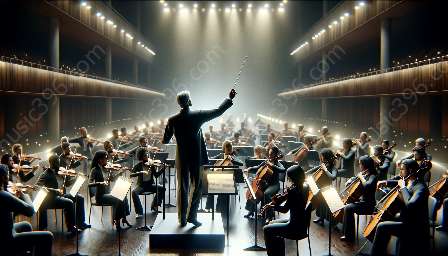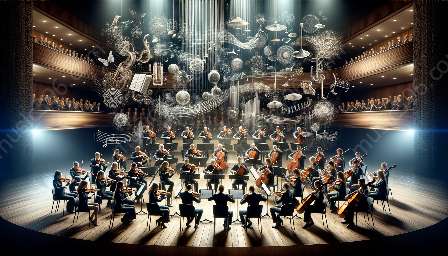Conducting an orchestra requires precision, artistry, and a deep understanding of musical communication. The baton serves as the primary tool for conductors to guide and communicate with the musicians. There are various baton techniques, each with its own impact on orchestral rehearsal. In this comprehensive guide, we will delve into the different types of baton techniques used by conductors, their influence on orchestral rehearsal, and their relationship with orchestration. We will also explore effective orchestral rehearsal techniques and strategies that complement different baton techniques.
Understanding the Role of the Conductor's Baton
The conductor's baton is a fundamental extension of the conductor's body, allowing them to convey musical gestures, cues, dynamics, tempo changes, and phrasing to the orchestra. The baton serves as a visual guide, enhancing the conductor's ability to communicate their musical interpretation effectively. By mastering various baton techniques, conductors can elicit specific responses from the orchestra, shaping the overall musical performance.
Types of Baton Techniques
Conductors utilize a range of baton techniques to convey their musical vision and lead the orchestra. These techniques include the following:
- 1. Downbeat Technique: This traditional technique involves the conductor initiating the opening beat of each measure with a distinct downward stroke. It provides a clear and precise indication of the rhythmic pulse and aids the orchestra in maintaining cohesion and unity.
- 2. Upbeat Technique: In contrast to the downbeat technique, the upbeat technique emphasizes the preparatory motion before the downbeat. Conductors utilize upward gestures to signal the impending downbeat, creating a sense of anticipation and momentum in the music.
- 3. Circular Technique: This expressive technique involves circular or elliptical motions of the baton, allowing the conductor to convey phrasing, fluidity, and expressive nuances within the music. The circular technique is particularly effective for shaping melodic lines, transitions, and dynamic fluctuations.
- 4. Staccato Technique: Conductors use sharp, concise movements with defined accents to highlight staccato passages and articulation within the music. This technique fosters clarity and precision in rhythmic articulation, enhancing the orchestra's collective articulation and rhythmic accuracy.
- 5. Legato Technique: The legato technique focuses on smooth, connected gestures that sustain the musical phrases and promote a seamless flow of musical lines. Conductors employ fluid and continuous baton movements to cultivate lyrical, expressive interpretations in the orchestra's performance.
- 6. Dynamic Technique: This technique emphasizes variations in volume, intensity, and overall dynamic shaping. Conductors utilize dynamic baton movements to convey changes in volume, accentuate climactic moments, and sculpt the sonic landscape of the music.
Impact on Orchestral Rehearsal
Each baton technique has a distinct impact on orchestral rehearsal, influencing the orchestra's responsiveness, cohesion, and expressive delivery. The choice of baton technique reflects the conductor's interpretative decisions and directly shapes the orchestra's musical execution and rehearsal process. By understanding the nuances of each technique, conductors can effectively communicate their artistic intentions, fostering a collaborative and productive rehearsal environment.
Relationship with Orchestration
Effective orchestration hinges on the conductor's ability to convey subtle and nuanced musical directions to the orchestra. The choice of baton techniques directly correlates with orchestration, as it influences the orchestral timbre, balance, and overall sonic impact. Conductors adept in various baton techniques can refine the orchestral performance, bringing out the inherent qualities of the instrumentation and enhancing the orchestral textures within the context of the composer's orchestral score.
Orchestral Rehearsal Techniques and Strategies
In addition to mastering baton techniques, conductors can employ various rehearsal techniques and strategies to optimize the orchestra's performance readiness and musical coherence. Effective orchestral rehearsal techniques include:
- 1. Sectional Rehearsals: By focusing on individual sections within the orchestra, conductors can address specific technical and musical challenges, fostering precision and unity within each section before integrating the entire ensemble.
- 2. Collaborative Listening: Encouraging active listening and musical engagement among orchestra members cultivates a symbiotic exchange of musical ideas and promotes ensemble cohesion.
- 3. Phrase Rehearsals: Conductor-led rehearsals that emphasize musical phrasing, interpretation, and expressive communication, allowing the orchestra to refine musical nuances and cohesive musical shaping.
- 4. Technical Exercises: Incorporating targeted technical exercises and drills tailored to the music's specific demands helps enhance the orchestra's technical proficiency and overall musical agility.
- 5. Collaborative Feedback: Creating a supportive environment for open communication and feedback empowers orchestra members to contribute to the collective musical interpretation and fosters a sense of ownership in the music-making process.
By integrating these rehearsal techniques with the appropriate baton techniques, conductors can cultivate a musically rich and cohesive orchestral performance, ensuring that the orchestra's artistic potential is fully realized.


